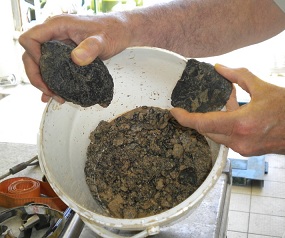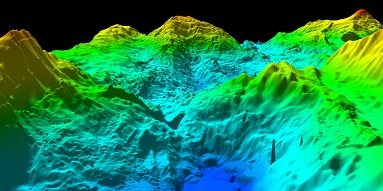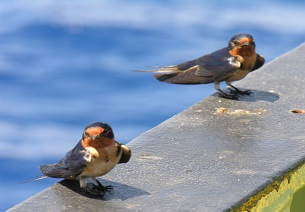Saturday 10th April
We hit a few problems with our low-technology method of sampling the seafloor: while dragging our 'bucket' it got caught, probably on large rocks. Hauling and veering the cable, and moving the ship around, eventually set us free. We did fear we had lost it along with the contents, so we were relieved when it came to the surface. However, this incident delayed our departure to collect Autosub6000.
Analysing the contents of our bucket, we peridotite rock, pulled up from the earth's mantle. This pleased the geologists because it confirmed their thoughts about exposed mantle rock at the seafloor of the MCSC (Mid-Cayman Spreading Centre). This finding, in conjunction with evidence from our sensors, suggests an area ideal for active deep-sea vents.

An anxious time for Steve and the Autosub6000 team - arriving late to collect Autosub6000 could have put it at risk from being hit by other vessels or, more likely, losing its positional signal. But on our arrival at the rendezvous point, its signals indicated it was still underwater. We watched and waited for it to surface, then positioned the ship for bringing it on deck.
Back on deck, following its second mission near Mount Dent, the Autosub6000 team extracted its previous cargo of data, and checked it over for any damage or faults. The mission was a success and has given us a higher resolution map of the area. The image below shows the kind of terrain covered by the vehicle.

We spent the next eleven hours surveying with the CTD probe , looking for particles in deep water that betray 'black smoker' vents below. Hunting deep-sea vents like this is laborious work, as a cluster of vents is usually only a few tens of metres across, and five kilometres below the water surface here. Autosub6000 then went out on its third mission to investigate the strongest signals, and now we're running the CTD again - a highly productive 24 hours!
There was a lighter moment this afternoon when a few extra passengers joined us: a family of barn swallows, looking exhausted but pleased to have a place to take a short rest. We haven't seen many other vessels or wildlife here in the Cayman Trough.



